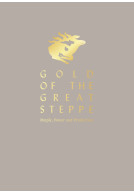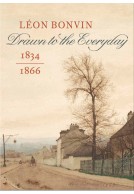West Country to World's End (Paperback)
Pages: 120
Illustrations: 50 col illus
ISBN: 9781907372520
Published: 19th October 2013
(click here for international delivery rates)
Order within the next 10 hours, 55 minutes to get your order processed the next working day!
Need a currency converter? Check XE.com for live rates
During the Tudor Age the South West was famed for the innovation and endeavor of its people. Devon sea dogs Drake, Raleigh and Hawkins sailed to ‘World’s End’ in their pursuit of treasure and glory, Exeter’s Nicholas Hilliard produced exquisite miniature portraits of courtiers while fellow Exonian Thomas Bodley re-founded Oxford University’s library, later named the Bodleian in his honor.
These men lived during the religious turmoil and political intrigue of Elizabeth I’s reign– a time of opportunity for the merchants and traders of Devon. Many grew rich on the fruits of overseas trade and expressed their new status through fashionable houses, fine furnishings, decoration and valuable personal possessions. The demand for goods was met by a network of local craft workers: plasterers, masons, carpenters, lace-makers and goldsmiths. Aspects of their lives are revealed in this book, published to accompany the fascinating exhibition at the Royal Albert Memorial Museum, Exeter, which will draw together paintings, artifacts and documents from galleries, museums and record offices to tell the story of the South West and its people set against the backdrop of one of the most,evocative periods in British history.
It was during the Elizabethan ‘Golden Age’ that West Country men became famous for their innovation and endeavour. Devon ‘sea dogs’ Francis Drake, Walter Raleigh and John Hawkins sailed to ‘World’s End’ in pursuit of treasure, glory and new dominions for the queen. Exeter’s Nicholas Hilliard produced exquisite miniature portraits of courtiers, while fellow Exonian Thomas Bodley re-founded Oxford University’s library, later named the Bodleian in his honour. These men achieved their fame and fortune in an age of religious turmoil and political intrigue, but it was also a time of opportunity – especially for the merchants of Devon. Many grew rich on the fruits of overseas trade and expressed their new wealth and status through fashionable houses, fine furnishings and valuable personal possessions.
The demand for luxury goods for the new elite in society was met by a network of local craft workers. A recent Royal Albert Memorial Museum research project funded by The Paul Mellon Centre for Studies in British Art has combed the archives of record offices in search of information on their lives and products. Accompanying an exhibition at RAAM, this book places original manuscripts alongside the work of local goldsmiths, carpenters and masons to tell their tales. Of particular note are the silver communion cups: often fashioned from melted down pre-Reformation chalices, by leading Exeter goldsmiths such as Richard Hilliard (Nicholas’s father) and John Jones.
The prosperity of South West merchants at this period fostered a sense of civic pride that was expressed through the foundation of hospitals, schools and almshouses, as well as improvements to waterways, such as the building of Exeter canal. By embracing the spirit of the Renaissance, it also became an age of scholarship and curiosity. Antiquaries such as Richard Carew, John Hooker and John Norden compiled the first regional histories and mapped the cities and monuments of the South West. And this sense of curiosity spread across the oceans. As evidenced by Drake’s circumnavigation of the globe in 1577-80, represented in the exhibition by the exuberant Drake Cup, and Raleigh’s ‘Virginia’ plantation project on the east coast of America. West Country to World’s End features some of Cornishman John White’s watercolour views of indigenous Algonquians and their settlements in the New World – rare visual traces of an extraordinary encounter between two cultures.
The leading South West Tudors played out their roles against the backdrop of national and international politics. Many took prominent parts in repulsing the Spanish Armadas that threatened England’s security from 1588: the book publishes a rarely seen large-scale oil painting of Elizabeth and the Spanish Armada that captures the drama of the battle. It also explores the art of the Tudor court from the impact of Holbein – shown through stunning examples from the Royal Collection – through to the jewel-like miniatures by Nicholas Hilliard. The Exeter man’s contribution to the visual arts is celebrated in the city of his birth with portraits including Walter Raleigh, Lord Howard of Effingham and James I.
Essays by leading scholars in the field of South West arts and the Tudor period edited by Professor Sam Smiles. Susan Flavin discusses developments in the decorative arts of the 16th century based on archival research, Sam Smiles writes on education and learning, Stephanie Pratt on exploration and Karen Hearn on Nicholas Hilliard.














